We visited Igat Anak Tarang's Iban longhouse. The head of the
longhouse is usually the eldest male member of the family although some families may appoint the head based on a merit system. As Igat's family grow in size, for instance, when his son marry a wife and start his own family, his son would build his house by extending the current house. Eventually, the house would get longer with each of Igat's descendants starting up their own families. Thus, the longhouse is actually a train of joined stilt houses. In each house or section lives a family of 3 to 6 or more members, furnished with living rooms, bedrooms, a kitchen, maybe several washrooms and a storeroom. When a family moves away, the longhouse shortens by taking a bungalow down at one end. What's nice about the longhouse is they have a very long common area shared by all the families which stretch from one end of the house to the other. So, the children play in this common area, protected from weather and adults rest their bodies or mingle with other family members.
Our guide used to live in one of the longest longhouse in Temburong until his extended family members decided to move out and have their own place one by one. Today, the longhouse he lives in has about five families.
The longhouse's name on a sign post

Freme Travel's van right in front of the longhouse
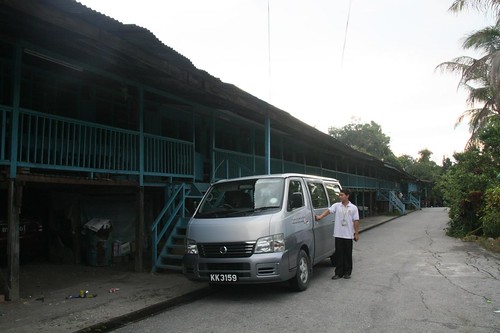
Longhouse's verandah
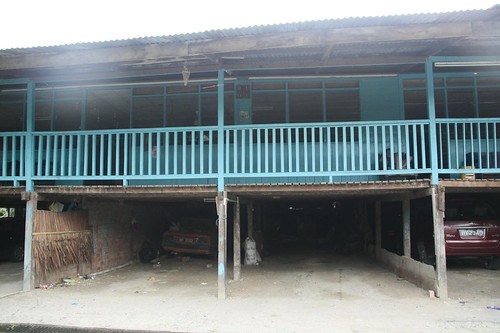
The very long common area. Notice the doors on the walls on the left, each door is the main door to each family's section. There are a few elders who are lying by the wall in the common area. Our guide told us that they were drunk from "tuak" (Iban rice wine).
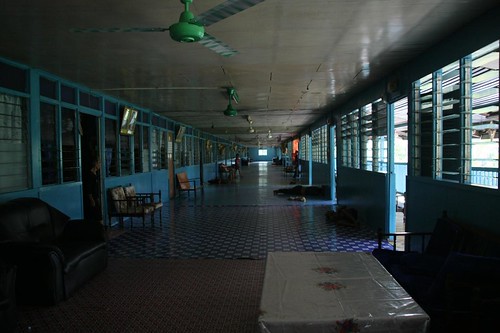
Along the walls, handicrafts made of rattan and recycled phone cards were hung.
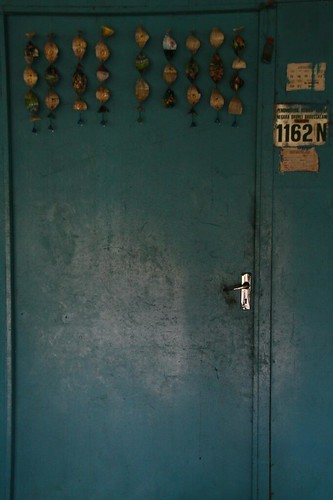
A painting of a waterfall and steel towers that lead to the canopy walk hung at the wall.
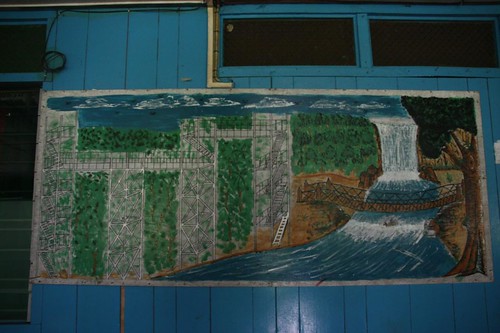
I like this section of the painting. :)
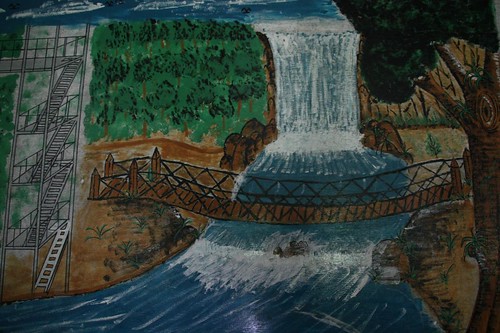
Outside the longhouse, I noticed this huge cactus plant which was sprouting many flower buds.

That night, our guide invited us to his house for the "Gawai" (festival of harvest) celebration. According to him, Gawai is celebrated like "Hari Raya" (the Muslim New Year) in his family. They visit houses of relatives where they serve light snacks or meals. We were served snacks and "tuak". We were showed the traditional clothes of the Iban ladies and was told that these are rarely worn nowadays. Our guide's mum explained that it is becoming difficult to find tailors of Iban costumes as many Ibans have lost the culture of making the dresses themselves. She added that the dresses are expensive to make. Please click here for some pictures of Iban costumes.

We were then ushered to our guide's aunt's section of the longhouse for dinner. There was pulut (beef stuffing in glutinous rice wrapped in leaves) and chicken curry, which both tasted very delicious. BT seemed to be enjoying his cultural education very much.
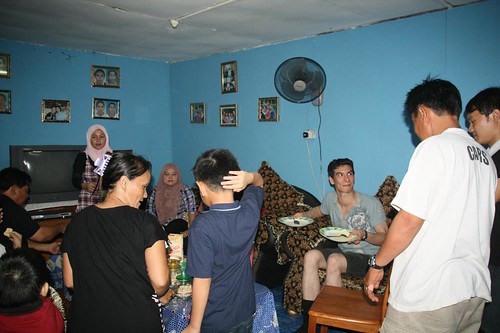










No comments:
Post a Comment